
Homolog.us Reports from Asia – 'Calcutta - a New Beginning?'
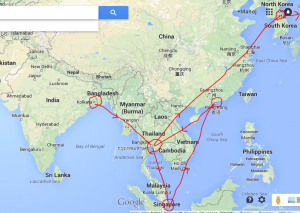
While in India, I visited the National Institute of Biomedical Genomics (NIBMG) in Kalyani near Calcutta (marked as Kolkata in the above map).
The National Institute of Biomedical Genomics (NIBMG) has been established as an autonomous institution by the Government of India, under the aegis of the Department of Biotechnology. This is the first institution in India explicitly devoted to research, training, translation & service and capacity- building in biomedical genomics.
It is located in Kalyani, West Bengal, India, about 50 km. from Kolkata. Connected to Kolkata by highways, expressways and railways, it takes about one and one-half hours to reach Kalyani from Kolkata.
The Institute is currently functioning from an interim facility of about 120,000 sq. ft. of floor space, constructed on the 2nd floor of a local hospital. laboratories, equipment (including flow-cell sequencers, whole- genome genotyping and gene expression platforms, multiplex suspension array platform, high-end computing platforms, etc.), bio-banking facility, office space and class rooms have been established.

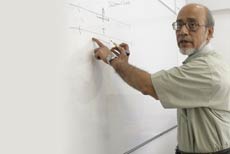
The institute is recently established by Professor Partha P. Majumder, a reputed scholar from the Indian Statistical Institute (ISI) in Calcutta. ISI is well-respected around the world. In the context of population genetics, this is where J. B. S. Haldane spent his later life.
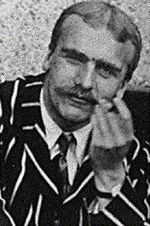
In 1956, Haldane left his post at University College London, and moved to Calcutta, where he joined the Indian Statistical Institute (ISI).[40] Haldane’s move to India was influenced by a number of factors. Officially he stated that his chief political reason was in response to the Suez Crisis. He wrote: “Finally, I am going to India because I consider that recent acts of the British Government have been violations of international law.” His interest in India was also because of his interest in biological research as he believed that the warm climate would do him good, and that India offered him freedom and shared his socialist dreams.[41] One immediate factor was related to a police case involving his wife Helen, who was arrested on charges of misbehaviour due to excessive drinking and refusal to pay fine. The university sacked her and Haldane followed suit. On his lighter side his “reason for settling in India was to avoid wearing socks,” and he concluded, “Sixty years in socks is enough.”[42] This could be partly true because Haldane always dressed up in Indian clothes, and was often mistaken to be a Hindu priest or guru.[2]
At the ISI, he headed the biometry unit and spent time researching a range of topics and guiding other researchers around him. He was keenly interested in inexpensive research and he wrote to Julian Huxley about his observations on Vanellus malabaricus, the Yellow-wattled Lapwing, boasting that he observed them from the comfort of his backyard. Haldane took an interest in anthropology, human genetics and botany. He advocated the use of Vigna sinensis (cowpea) as a model for studying plant genetics. He took an interest in the pollination of the common weed Lantana camara. The quantitative study of biology was his focus and he lamented that Indian universities forced those who took up biology to give up on an education in mathematics.[43] Haldane took an interest in the study of floral symmetry. His wife, Helen Spurway, conducted studies on wild silk moths.[41] In January 1961 they befriended the young Canadian lepidopterist Gary Botting, who initially visited the Indian Statistical Institute to share the results of his experiments hybridising silk moths of the genus Antheraea. Uncomfortable with Haldane’s “communist” sympathies, the United States cultural attache, Duncan Emery, summarily cancelled Gary Botting’s attendance at a high-profile banquet to which the Haldanes had invited him to meet biologists from all over India. Haldane protested this “insult” by going on a much-publicized hunger strike.[44][45] When the director of the I.S.I., P. C. Mahalanobis, confronted Haldane about both the hunger strike and the unbudgeted banquet, Haldane resigned his post (in February 1961) and moved to a newly established biometry unit in Odisha.[41]
Being impressed by his stay in Calcutta and Bengal, Haldane later accepted Indian citizenship. That was in early 1960s, when Bengal had very impressive past record of scholarship to report. Modern epidemiology was born there.
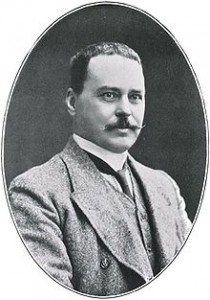
Sir Ronald Ross, KCB, FRS[1][2] (13 May 1857 16 September 1932), was an Indian-born British medical doctor who received the Nobel Prize for Physiology or Medicine in 1902 for his work on malaria, becoming the first British Nobel laureate, and the first born outside of Europe. His discovery of the malarial parasite in the gastrointestinal tract of mosquito led to the realisation that malaria was transmitted by mosquitoes, and laid the foundation for combating the disease. He was quite a polymath, writing a number of poems, published several novels, and composed songs. He was also an amateur artist and natural mathematician. He worked in the Indian Medical Service for 25 years. It was during his service that he made the groundbreaking medical discovery. After resigning from his service in India, he joined the faculty of Liverpool School of Tropical Medicine, and continued as Professor and Chair of Tropical Medicine of the institute for 10 years.
In physics, S. N. Bose mathematically showed the existence of Boson particle.
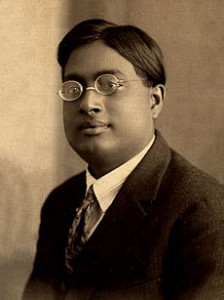
Satyendra Nath Bose FRS[1] was an Indian physicist specialising in mathematical physics. He was born in Calcutta. He is best known for his work on quantum mechanics in the early 1920s, providing the foundation for BoseEinstein statistics and the theory of the BoseEinstein condensate.
Satyendra Nath Bose, along with Saha, presented several papers in theoretical physics and pure mathematics from 1918 onwards. In 1924, while working as a Reader (Professor without a chair) at the Physics Department of the University of Dhaka, Bose wrote a paper deriving Planck’s quantum radiation law without any reference to classical physics by using a novel way of counting states with identical particles. This paper was seminal in creating the very important field of quantum statistics. Though not accepted at once for publication, he sent the article directly to Albert Einstein in Germany. Einstein, recognising the importance of the paper, translated it into German himself and submitted it on Bose’s behalf to the prestigious Zeitschrift fr Physik. As a result of this recognition, Bose was able to work for two years in European X-ray and crystallography laboratories, during which he worked with Louis de Broglie, Marie Curie, and Einstein.[4][12][13][14]
C. V. Raman worked in Calcutta and discovered Raman effect.
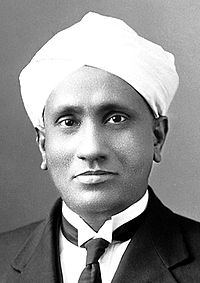
In 1917, Raman resigned from his government service after he was appointed the first Palit Professor of Physics at the University of Calcutta. At the same time, he continued doing research at the Indian Association for the Cultivation of Science (IACS), Calcutta, where he became the Honorary Secretary. Raman used to refer to this period as the golden era of his career. Many students gathered around him at the IACS and the University of Calcutta.
On 28 February 1928, Raman led experiments at the IACS with collaborators, including K. S. Krishnan, on the scattering of light, when he discovered what now is called the Raman effect.[8] A detailed account of this period is reported in the biography by G. Venkatraman.[9] It was instantly clear that this discovery was of huge value. It gave further proof of the quantum nature of light.
All that changed after the partition of Bengal in 1947 and Calcutta went into slow decline since 1960s, when Bengalis followed the Soviet side in the cold war. By now it lost almost all of its cultural legacy and modern Calcutta is unrecognizable by anyone, who spent time there in 1970s or 80s.
It is quite remarkable that the Statistical Institute maintained its quality during the period of Bengal’s decline. Therefore, I am hopeful that the new institute in Kalyani will combine their theoretical skills in population genetics with the availability of high-through sequencing instruments to contribute positively to science. You can find the list of faculty members and their research projects here. I am thankful to Dr. Priyadarshi Basu for inviting me there.
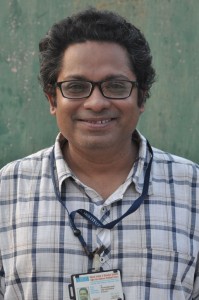
-——————————————————-
In the larger context, although I am very pessimistic about India, Calcutta may have hit the bottom. Everyone appears to be negative about its future, and every article you read in mainstream press describes how the place failed.
Kanika Datta: ‘West Bengal still on decline’
Decline of Bengal, death of the bhadralok
Falling total fertility rate in Kolkata sets alarm bells ringing
The Empire’s second city is now a second-grade city
The decline and fall of Kolkata
Needless to point out that the consensus of intellectuals was unusually positive about Calcutta in late 1950s, just before the decline started.